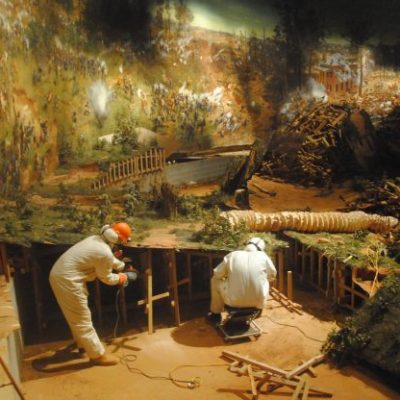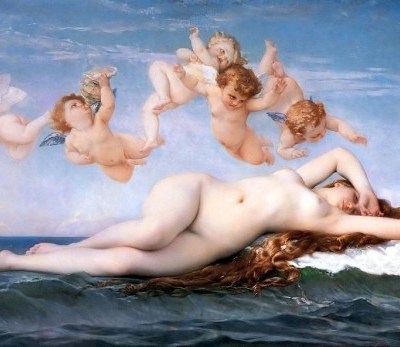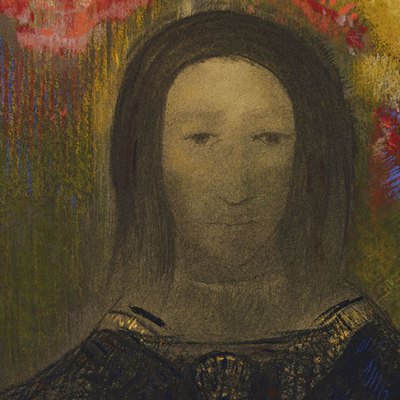One hundred and fifty years ago this week, Paris was under siege. On 17 September 1870, the French capital was surrounded by Bismarck’s armies who dug in for what would be a brutal nine months of occupation, which forced the civilian population to endure bombardment, food shortages, disease, wild rumours and crippling anxiety. It is easy to dismiss the Franco-Prussian War as one more hiccup in the long history of Franco-German antagonism, dwarfed by the later armed conflicts it gave rise to (and in terms of military methods, anticipated) and by the deadly heroics of its revolutionary sequel, the Paris Commune. But the war set in train political changes that are still with us: on 4 September 1870 the Second Empire formally collapsed, bringing an end to the French experience of monarchical rule. Few then would anticipate that the improvised, emergency government of national defence that filled the breach would go on – as the Third Republic – to be France’s most enduring regime, lasting for 70 years until the dark days of 1940.
In the arts too, the impact of the war should not be understated. As ‘Impressionists in London’ at Tate Britain in 2017–18 explored, the flight of Daubigny, Monet and Pissarro to London allowed for their introduction to the dealer Paul Durand-Ruel and from there the emergence of Impressionism as a brand. But the impact of the war on those who remained in France was just as profound and traumatic. Impressionism itself may have taken a very different direction had Frédéric Bazille, the most brilliant figurative artist in Monet’s circle, not met his death at the battle of Beaune-la-Rolande in November 1870, just shy of his 29th birthday. His final, incomplete work – the exquisite Study for a Young Male Nude in the Musée Fabre – underscores the immensity of his loss.
Jeune homme nu couché sur l’herbe (1870), Frédéric Bazille. Musée Fabre de Montpellier Méditerranée Métropole. Photo: Frédéric Jaulmes

The roll call of artists who donned a uniform in 1870 is remarkable. The conflict left powerful traces in the work of Tissot, Manet, Rodin, Daumier and Meissonier, who served as a colonel commanding an infantry unit (the war had consequences for Menzel, Anton von Werner and Max Liebermann on the other side). Artists of all political persuasions rallied behind the patrie. Even Rosa Bonheur did her bit in the Fontainebleau forest, refusing to dine with the Prussians who visited her studio, and dreaming of routing them à la Joan of Arc. Berthe Morisot’s mother recalled that Degas became ‘impossible’ on hearing the news that his friend the equestrian sculptor Joseph Cuvelier had fallen in combat. ‘He and Manet almost came to blows arguing over the methods of defence and the use of the National Guard, though each of them was ready to die to save the country.’
Among the victims, perhaps the most idolised was painter Henri Regnault, gunned down at the battle of Buzenval at the age of just 27. Having scooped the Prix de Rome, Regnault has been the toast of the Salon in the late 1860s for his sensational and seductive Orientalist fantasies. He rushed back from North Africa to enlist, putting aside plans for an artwork on the scale of Veronese’s Wedding Feast at Cana. News of his death in January 1871 created a flood of memorials in different media, from Carolus-Duran’s sketch of his friend lying in the snow – the pose modelled on Manet’s toreador– to the publication of Regnault’s intimate letters and Henri Chapu’s imploring marble mourner at the École des Beaux-Arts. As Marc Gotlieb has noted, Buzenval was ironically the first of Regnault’s deaths, as this one-time lion of the French school soon plummeted out the canon and popular memory.
Le Rêve (1888), Édouard Detaille. Musée d’Orsay, Paris. Photo: © RMN-Grand Palais (Musée d’Orsay)/Hervé Lewandowski

Thanks to art historians such as Hollis Clayson and John Milner we have a vivid sense of how the war and siege affected life within the imprisoned city. The ordeal of two million civilians left its mark on many artists, as is visible, for instance, in the balloons and pigeons (crucial lifelines to the outside world) depicted by Puvis de Chauvannes. But there is scope to think more about what the Franco-Prussian War did to battle painting. Édouard Detaille had learned his love of battle painting studying under Meissonier, even before his service in the National Guard. He used his extensive collection of tin soldiers, photographs and uniforms – preserved at the Musée de l’Armée – to reconstruct the campaigns with forensic precision. But while acclaimed for his accuracy, Detaille also forged a febrile nationalist mythology. His celebrated painting Le Rêve (1888) was purchased by the French state and displayed at the 1889 Exposition Universelle: by depicting the fallen soldiers of 1870 awakening from their graves to behold the charge of the Napoleonic Grande Armée, galloping overhead like spectral Valkyries, Detaille redeemed past defeats with the memory of former glories and the prophecy of future reckonings, uttering the nationalist cry of revanche.
Detaille’s spectacular canvas points to the appetite for war art on a colossal scale. Sadly, only fragments remain of the two panoramas he produced in collaboration with Alphonse de Neuville depicting the battles at Rezonville and Champigny (the latter, in the first four months of its going on display in 1882, attracted around 1600 visitors a day and took 400,000 francs). But a similar gargantuan project can be seen today at Lucerne: painted by Edouard Castres in 1881 on a circular canvas measuring 14 x 112 metres, the so-called Bourbaki Panorama depicts the entrance of General Bourbaki and his 87,000 bedraggled troops (the remaining half of an army which had tried in vain to relieve the siege of Belfort) into the Val-de-Travers valley in Switzerland. The result is an immersive, epic celebration of Switzerland’s traditions of humanitarianism and neutrality.
The Lion of Belfort by Auguste Bartholdi in Place Denfert-Rochereau in Paris – a smaller replica of the statue under Belfort Castle. Photo: Mbzt/Wikimedia Commons. Image: used under Creative Commons licence Attribution 3.0 Unported (CC BY-3.0)

The monumental legacies of the war are written into the architecture of Paris, which was drastically rebuilt after the devastation of l’année terrible. Following the scheme drawn up by the marquis de Chennevières in the 1870s, the frescoes inside the Panthéon trumpeted victors from France’s past, such as Clovis and Saint Louis, alongside Sainte Geneviève keeping watch over her favoured city. At the Opéra Garnier, which was also completed in the early 1870s, Paul Baudry’s dazzling ceilings celebrated the supremacy of French ‘classical’ civilisation (even, implausibly, in music). Made famous by the metro map, the heroes and memorials of the war nonetheless garner little attention in Paris today: take the reduced bronze version of Bartholdi’s Lion of Belfort at Place Denfert-Rochereau (named after the French general who defended the town during its 103-day siege). The skyscrapers at Grande Arche have completely upstaged Louis-Ernest Barrias’ sculptural group from 1883 which gave the district its name. Barrias’ pairing of a strident, towering Marianne and slumped male soldier exemplifies the inverted gender dynamics within republican iconography at this time, which one interpreter has called ‘hermaphroditic’.
Head within an Aureole (1894–95), Odilon Redon. The J. Paul Getty Museum, Los Angeles

Invasion, defeat and occupation had been a nightmare for France. Its horror was captured in desolate allegories like L’Énigme by Gustave Doré – himself from annexed Strasbourg – and later in Odilon Redon’s surreal charcoal and lithograph series known as the Noirs. The black sun motif there is surely an allusion to the solar eclipse Redon witnessed in December 1870, two days after the defeat of his battalion at La Monnaie, and which seemed a cosmic echo of the nation’s catastrophe. The humiliation of the defeat was brooded over obsessively: one of the most popular prints of the late 19th century was of Jean-Jacques Henner’s painting Elle attend (1871). This female personification of Alsace graced the walls of hundreds of thousands of French homes. Its popularity points to the perverse attraction that the tragic events of 1870 exercised over the French psyche.
After Detaille, Neuville was France’s premier war artist in the late 19th century, although his depictions of the Crimean War or the Zulu campaigns lack the desperation and bitterness of his scenes from 1870–71. Asked why he obsessively painted scenes of defeat, Neuville replied: ‘Because we should remember precisely what we try to forget.’
Correction: an earlier version of this article stated that nothing remains of the panoramas Édouard Detaille produced with Alphonse de Neuville. This has been corrected to reflect that fragments have survived.


